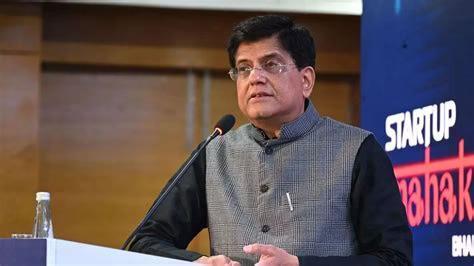
Indian Brands Go Global: Competing on Design & Quality
In recent years, Indian brands have made significant strides in establishing themselves as global players, competing on design, quality, and innovation. Gone are the days when India was merely a hub for attracting foreign brands; today, Indian companies are actively exporting their own products and services to the world. This shift in perceptions is not only a testament to India’s growing economic muscle but also a reflection of its increasingly sophisticated manufacturing capabilities and strategic marketing efforts.
According to Dheeraj Sinha, CEO of FCB India, Indian brands are winning globally on the back of their focus on design, quality, and competitiveness. In an interview with The Core, Sinha noted that Indian brands have successfully leveraged their unique strengths to carve out a niche for themselves in the global market. “Indian brands are not just competing on price; they’re competing on design, quality, and innovation. They’re creating products and services that are relevant to global consumers and are resonating with them,” he said.
One of the key factors driving India’s global brand ambitions is its robust manufacturing sector. With a large and skilled workforce, India has been able to produce high-quality products at competitive prices, making it an attractive destination for global companies. Additionally, the country’s strategic location, with its proximity to major markets in Asia, Europe, and the Middle East, has enabled Indian brands to establish a strong presence in international markets.
Another crucial factor is India’s growing pool of talented designers, engineers, and innovators. The country has a thriving startup ecosystem, with many entrepreneurs and innovators creating cutting-edge products and services that are attracting global attention. This talent pool has been instrumental in helping Indian brands develop unique and innovative products that are setting them apart from their global competitors.
Take, for instance, the success of Indian fashion brand, Fabindia, which has expanded its operations globally, with a presence in over 20 countries. Fabindia’s focus on sustainable and eco-friendly practices, combined with its commitment to preserving traditional Indian craftsmanship, has resonated with consumers worldwide. Another example is the Indian beauty brand, HUL’s Lakmé, which has become a household name globally, thanks to its innovative products and widespread distribution network.
Indian companies are also leveraging digital platforms to reach global audiences, leveraging social media, e-commerce, and other digital channels to promote their brands and products. This has enabled them to bypass traditional distribution channels and connect directly with consumers, who are increasingly seeking unique and authentic products.
In addition to design, quality, and innovation, Indian brands are also competing on their brand equity and reputation. Companies like Tata, Infosys, and Wipro have built strong reputations globally, thanks to their commitment to quality, customer service, and corporate social responsibility. These brands have successfully created a sense of trust and loyalty among their customers, which has helped them establish a strong foothold in international markets.
The success of Indian brands in global markets is also attributed to their ability to adapt to local market preferences and consumer behaviors. Companies like Haldiram’s and KFC India have successfully tailored their products and services to suit local tastes and preferences, which has helped them gain a strong following in international markets.
However, despite these successes, Indian brands still face significant challenges in establishing themselves globally. One of the key challenges is the need to invest in marketing and branding efforts, which can be a significant expense. Additionally, Indian companies may need to adapt to different regulatory environments, distribution channels, and consumer behaviors in each market.
Another challenge is the need to balance local and global strategies. While Indian brands need to cater to local preferences, they also need to maintain a global perspective and adapt to changing consumer behaviors and preferences. This requires a delicate balance between local and global strategies, which can be a challenging task for Indian brands.
In conclusion, Indian brands are making significant strides in establishing themselves as global players, competing on design, quality, and innovation. With a robust manufacturing sector, a growing pool of talented designers and engineers, and a strong focus on brand equity and reputation, Indian brands are well-equipped to succeed in international markets. While there are challenges ahead, Indian companies are well-positioned to continue their global expansion, leveraging their unique strengths to carve out a niche for themselves in the global market.






